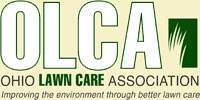Managing Your Lawn
Tips on Creating a Thicker Greener Lawn
Part 1: Mowing Best Practices

How to Mow Your Lawn
A proper mowed lawn can make the difference between a lawn that you’re proud of and one that looks weak and stressed. Proper mowing promotes thick, lush growth and leaves your neighbors envious while improper mowing makes your lawn more susceptible to stresses such as heat and drought not to mention promotes high rates of weed germination.
How much should I cut?
While regular mowing is important to a healthy lawn, setting a firm mowing schedule for your grass can have its drawbacks. Weather, your type of grass, and seasonality can all play a factor in the growth of the lawn.
As a general rule, maintain established lawns so you never remove more than one-third of the grass blade in a single mowing. Cutting the lawn too short reduces the carbohydrates that support healthy grass growth. Remove too much at once, and your lawn becomes more vulnerable to stress from weather, insect pests, diseases, and weeds.
Proper mowing height for established lawns is especially important during the summer months. During periods of warm weather, opt for the higher mowing heights to help shade grassroots and support deep root growth. Your first and last cut of the season should be shorter to help limit disease damage over the winter months. When competing with expanding tree roots it is even more important to allow the grass to grow itself out.
Guidelines for when to mow a new lawn after seeding or when to mow new sod are different than for established lawns. Newly seeded lawns may take one to two months to establish themselves before they’re ready for mowing. Wait to mow new grass until all of the seed has sprouted and it reaches one and one-half times its recommended height.
How to Promote a Healthy Lush Lawn when Mowing
Cut when the lawn when it’s dry-cutting wet grass can result in an uneven trim. Wet clippings can also clog your mower and cause it to dump clumps of grass on your lawn; if they aren’t raked up, they can deaden growing grass.
Don’t get boring with your patterns-Grass tends to lean, so constantly cutting the lawn the same way can train the grass to favor a particular side. This can cause ruts long-term so don’t be afraid to get crazy when jamming out. We’d advise staying away from cutting in circles we’ve heard that can be a never-ending process.
Leave your clippings lay-Lay what? Grass clippings break down quickly and return essential nutrients to your soil especially when you are a part of Portage Turf’s fertilization program. Just make sure to be cutting the lawn often enough that you are shaving clippings. Clippings can also be used as compost should you want to clean up for your summer party. We work too many hours during the summer to have friends over but we definitely understand wanting to look presentable.
Keep them sharp- You wouldn’t cut your steak with a butterknife, would you? Ok maybe we’ve all tried to get by at one point but imagine your grass as a nice juicy grass-fed steak that came full circle right? Cutting the grass with dull blades(butterknife) will leave your grass(steak)with ragged brown edges. Using dull blades over and will weaken the grass blades over time leaving your lawn open to diseases. Much like your butterknife for best hygiene make sure to wash your blades after each cut. We apologize if your family is out grazing now.
Cut it High- This seems easy but maybe the biggest struggle in Northeast Ohio. Did you know that most Ohio grass types should be cut when their lengths reach 3.75 to 4.75 inches? Longer grass blades are able to find more nutrients in the soil allowing the lawn to shade itself during times of droughts and help naturally keep weeds out of the lawn. Plus taller grass provides more cushion in case you have a habit of tripping while doing lawn work. The only exception to the rule last cut of the season. Typically these cuts you will want shorter. This will help prevent disease and possible snow mold damage the following spring.





